Concrete Ballast Calculator Formulas & Mix Ratio Help

Water Cement Ratio in Concrete YouTube
Table of Contents Calculate Cement to Ballast Whether you're a DIY enthusiast or a professional builder, using this user-friendly calculator can streamline your material estimation process and prevent unnecessary expenses or shortages. Ballast Calculator Volume (m³): Concrete Mix Ratio (cement:ballast): Calculate Materials Cement Needed: 0 kg
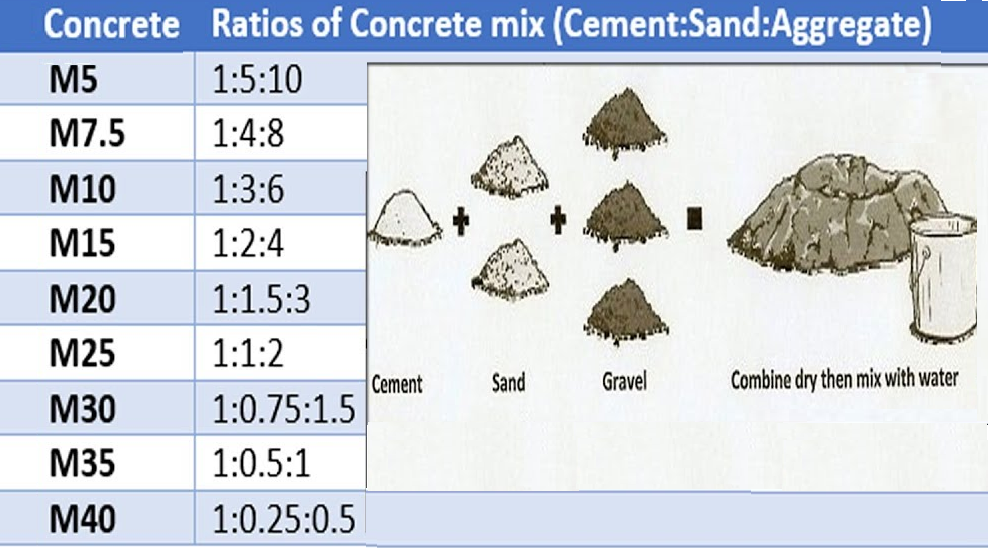
What is the strongest concrete mix ratio?
Cement - 1 part Sand (fine aggregate) - 2 parts Gravel (coarse aggregate) - 4 parts When premixed ballast is required, then 6 parts are required for 1 part of cement. Ideally, the water to be used should be 55 percent of the net weight of the cement if all other materials will be delivered absolutely dry.
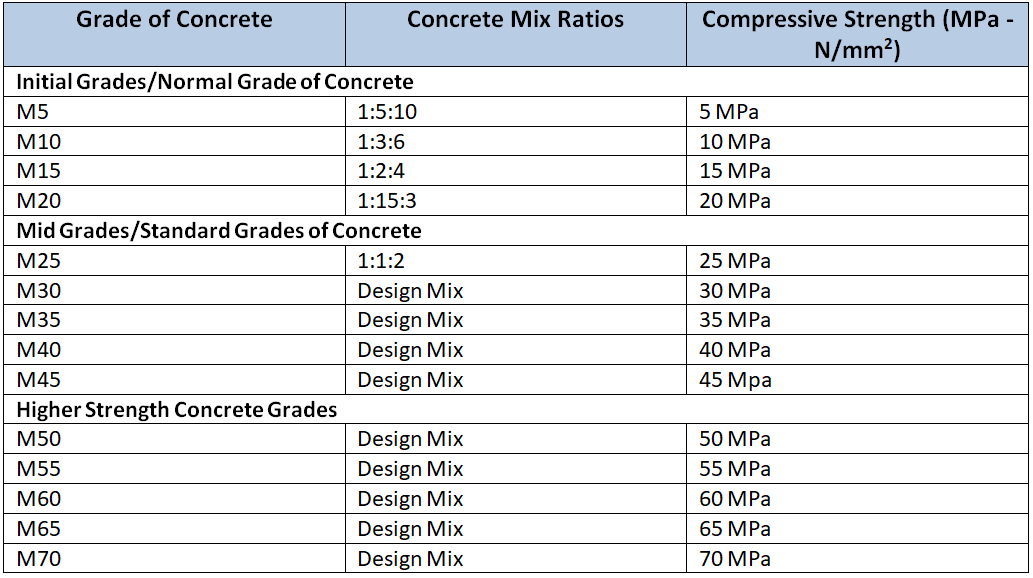
Different types of Concrete Mix Ratio by ShyamSteel Medium
The ballast cement mix ratio can be adjusted depending on the specific requirements of the project. For example, if a higher strength concrete is needed, the ratio can be altered to 1:1.5:3, with a lower water-cement ratio of 0.45. In conclusion, the ballast cement mix ratio plays a vital role in the quality and durability of the concrete.
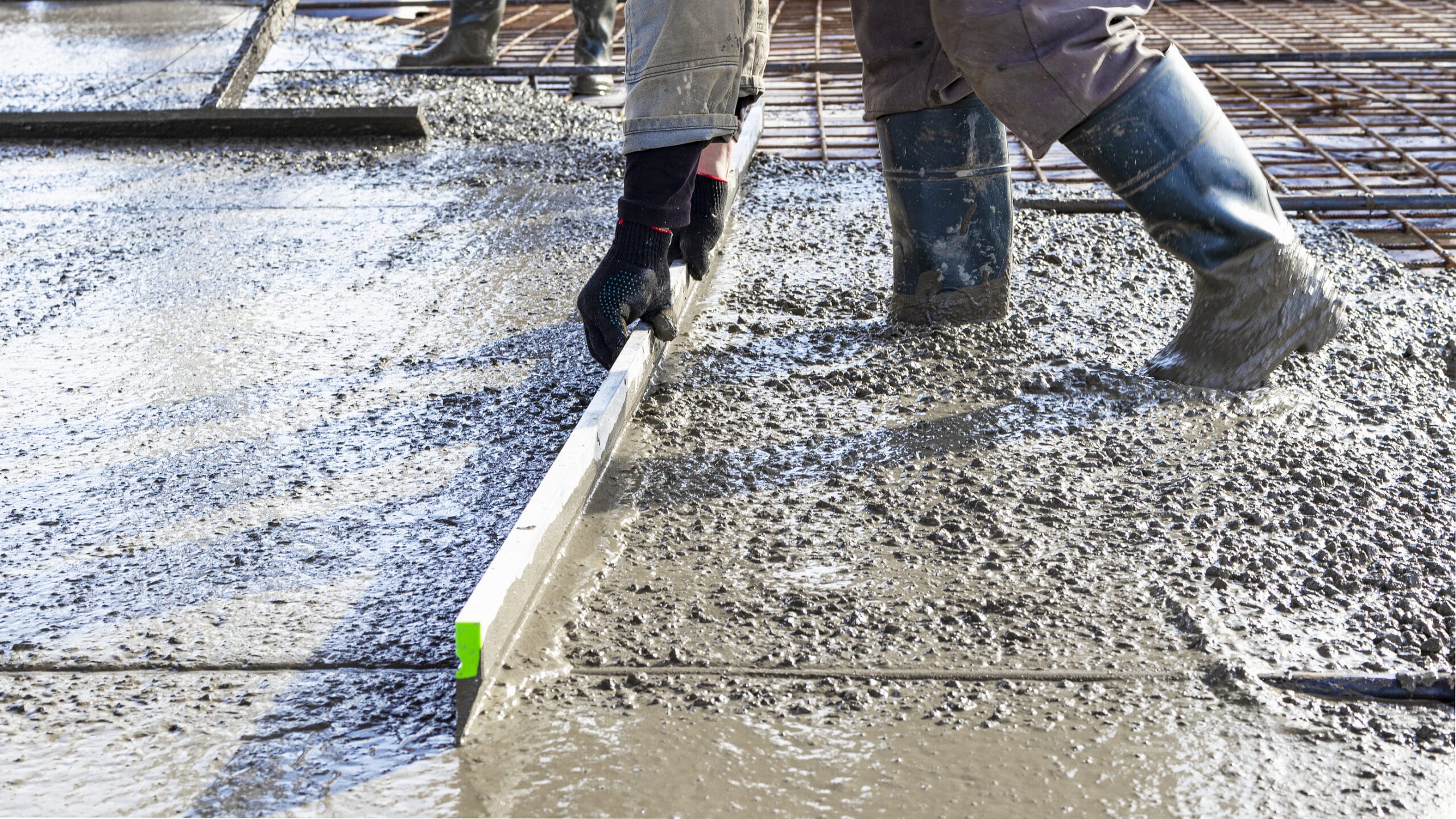
Concrete Ballast Calculator Formulas & Mix Ratio Help
This can be quite a subjective topic as the quantity required can vary depending on the construction project and the preferred concrete mix ratios. A rough rule of thumb is to use a 6:1 ratio of ballast to cement for making concrete. Conclusion. In conclusion, ballast is far more than just a mix of sand and gravel.

Different Grade Of Concrete and water Cement Ratio Types of Concrete All About Civil
Table of Contents How much ballast and cement do I need for 1m3 concrete Typically, the weight of ballast is about 1.75 tons per cubic meter or 1750 kg/ m3, available in a small bag of 25kg which yields volume around 0.017 cubic meters.
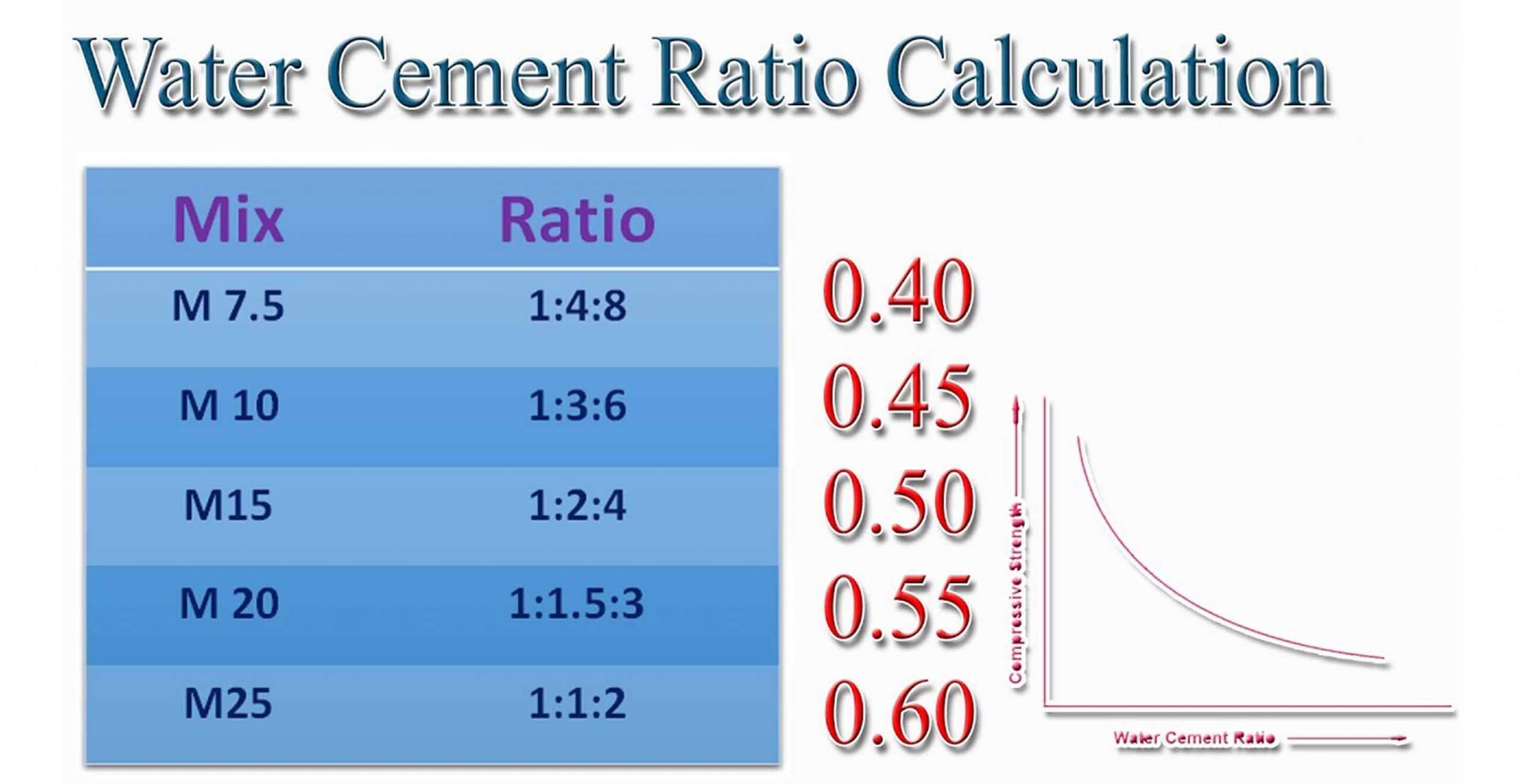
Water Cement Ratio Calculation Engineering Discoveries
ballast belle cement mixer concrete cadplan New Member I'm needing to mix a small amount of concrete for porch foundations, I've got an Belle Minimix 150 and planning to use 14mm ballast. The ballast is available as 20 kg bags. Would a 6:1 ballast to cement ratio be suitable?

Concrete Ballast Calculator Formulas & Mix Ratio Help
Ballast sand is a term used for a blend of sand, small stones, and gravel. It is a type of aggregate that will be used within construction for two main purposes. The type of sand used is normally sharp sand, which is a gritty type of sand that is popularly used for concrete mixes and loosening clay soil.
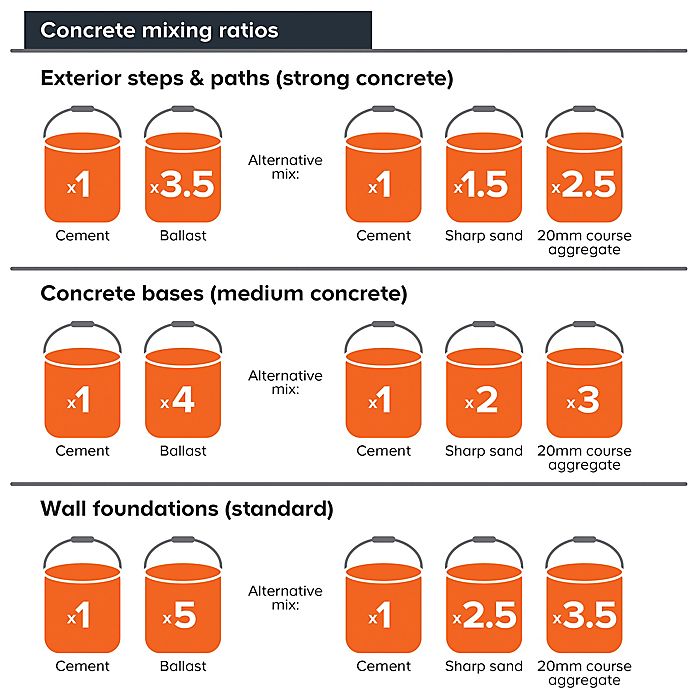
Cement, mortar and concrete buying guide Ideas & Advice DIY at B&Q
Concrete ballast or aggregates, which provide the bulk, increases the strength of the concrete and improves its properties to suit its application. Ballast for concrete comprises of coarse materials like sharp sand, gravel, and limestone. Concrete ballast or aggregates make up the bulk of the cement mix.
Mixing cement with 10mm gravel?. DIYnot Forums
The ratio of cement to ballast can also vary depending on the strength and density of the final concrete product. For example, a standard concrete mix of 1:2:4 (1 part cement, 2 parts ballast, 4 parts sand) would require approximately 7 bags of cement per ton of ballast.

CEMENT MORTAR MIX RATIO AND ITS APPLICATION LCETED mixratio YouTube
metric These Concrete Calculators work out the required cement and all-in ballast or cement, sharp sand and gravel required to complete a user defined volume of finished concrete. Both concrete calculators make an allowance for the fact that ballast etc losses volume when mixed to make concrete.

How much cement sand & aggregate required for M10 concrete Civil Sir
Calculate the volume: The first step is to figure out the volume of your floor area, which will be length (l) x width (w) x depth (d). So, if you have a 1 metre long, 1 metre wide and 2-metre deep area, the 1 x 1 x 2 formula gives you 2 cubic metres.

Concrete Mix Ratio Types, Grades & Designs Daily Civil
Ready-Mix Concrete Types I Mixing Ballast Concrete Ratio July 14, 2023 by K-Zan Contents hide 1 Introduction 2 What Is Ready Mix Concrete? 2.1 Pre-mixed ready-mix concrete 2.2 Volumetric ready-mix concrete 2.3 Advantages of ready-mix concrete over manual mixing 3 Determining the Right Type of Ready Mix Concrete

How much ballast and cement do i need for 1m3 concrete YouTube
Notes The numbers I've used: Cement density: 1440kg/m3 All-in ballast density: 1650kg/m3 3 Gallon bucket: 13.638L 3 Gallon bucket of cement: 19.639kg 3 Gallon bucket of all-in ballast: 22.5kg Sources Bluecircle Mastercrete Share via: Tagged aggregate ballast cement concrete mix ratio

WaterCement Ratio Grade of Concrete and Water cement Ratio YouTube
6 parts pre mixed ballast 1 part cement In an ideal world, where everything is delivered dry, a water to cement ratio of approximately 0.55 should be used. As we have explained above, if requiring 25kg of cement in your mix, then to calulate the suggested volume of water it would be: 25 x 0.55 = 13.75kg (litres) of water.

How to Calculate Water Cement Ratio for Concrete Civil Calculations YouTube
A standard ballast cement mix ratio is 1 part cement to 5 part ballast for making concrete for the driveway and pathway. It is also possible to use a mix ratio of 1:4 or 1:6 in heavy construction. Concrete mix ratio using Ballast Using the concrete mix ratio 1:5 for slabs of concrete panels requires specific high strength concrete mixes.

How much ballast need to mix concrete
This ratio is used for most general construction projects, such as building walls, slabs, foundations, and driveways. If you are using a stronger mix, such as 1:2:3, which has a higher cement to ballast ratio, you will need approximately nine to ten bags of cement for a 25kg bag of ballast.